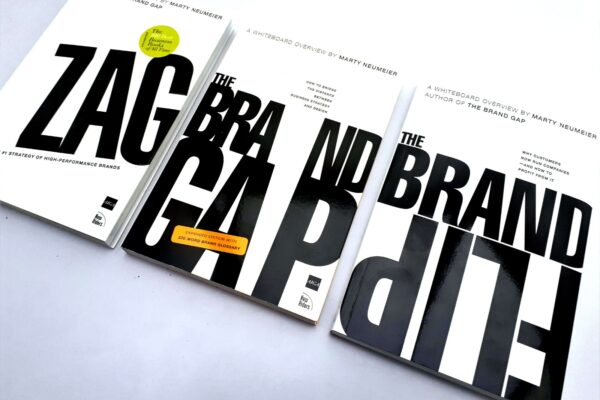Launching a product or service into the market demands careful consideration of several crucial factors. Among these, the pricing strategy takes precedence and plays a pivotal role. This strategic decision involves a thorough analysis of the target market, the brand’s positioning strategy, and the overall perception the product conveys. Price significantly influences consumer perception, and various brands adopt distinct pricing strategies tailored to their unique market positioning.
Defining Premium Pricing Strategy
Premium pricing, also known as prestige pricing, is a deliberate pricing strategy embraced by businesses and brands aiming to enhance their brand image and maximize profit margins. This approach entails setting product prices considerably higher than those of competitors. The underlying principle is simple: higher prices are often associated with superior quality. When effectively communicated through integrated marketing efforts, this perception of quality helps shape consumers’ views and positions the brand as a premium choice in the market.
Utilizing Premium Pricing Strategy: Unveiling the Psychology Behind
Implementing a premium pricing strategy is a deliberate choice that businesses make, rooted in various psychological and strategic considerations. One of the primary drivers behind this strategy is the powerful association between price and perceived quality, deeply ingrained in the human psyche.
The Psychological Impact of Price
Human decision-making, especially in the realm of purchasing, is significantly influenced by subconscious processes. When faced with a higher-priced product, our brains instinctively link it with superior quality. This innate connection, while not always accurate in reality, has evolutionary roots, serving as a survival shortcut developed over millions of years.
As consumers approach the buying decision, the analytical part of the brain, the neocortex, comes into play, allowing for a more rational evaluation of the product’s worth. However, the initial high price tag instantaneously aligns the brand with notions of excellence. This association goes beyond mere rationality; it elicits powerful emotional responses such as peace of mind, anticipation of a heightened experience, and a sense of elevated status. Remarkably, these emotions are intricately woven into our perception of a product, all influenced by the price tag affixed to it.
Strategic Implementation of Premium Pricing: Selecting the Right Scenarios
Employing a premium pricing strategy is a nuanced decision, contingent upon various factors such as target demographics, product excellence, and brand reputation. This approach might not always be suitable, especially if it doesn’t align with the desired market positioning. However, there are specific situations where premium pricing can be highly effective:
1. Luxury Association: Brands aspiring to exude an aura of prestige and opulence often opt for premium pricing. By setting higher prices compared to their competitors, these brands create an image of exclusivity and luxury, attracting a specific segment of discerning consumers.
2. First-Mover Advantage: Companies introducing innovative products or pioneering new approaches in the market can leverage their first-mover advantage. By setting premium prices, they establish themselves as trailblazers, positioning their offerings as unique and cutting-edge, thereby justifying the higher cost.
3. Exclusivity: Limited production capabilities, where only a finite number of units are manufactured annually, create an opportunity for premium pricing. The scarcity of the product enhances its perceived value, allowing brands to command higher prices, and underlining its exclusivity.
4. Patented Process: Brands safeguarding their proprietary processes through patents gain a competitive edge. This legal protection enables them to maintain premium prices without the fear of imitation. The unique nature of their methods becomes a compelling selling point, justifying the higher costs.
5. High Barriers for Entry: Companies with substantial financial resources can invest in high-quality products that are difficult for competitors to replicate. This investment in superior craftsmanship and materials justifies the premium price tag, creating a distinct market position that competitors find challenging to emulate.
6. Unique Experience: Businesses priding themselves on delivering unparalleled customer experiences and meticulous attention to detail can employ a premium pricing strategy. Customers willing to pay a premium are seeking not just a product but an extraordinary experience, making the higher cost worthwhile.
Premium Pricing Strategy: Balancing Pros and Cons
Embracing a premium pricing strategy offers various advantages, although it’s not a one-size-fits-all solution. Let’s delve deeper into the benefits and challenges associated with this approach:
Advantages of Premium Pricing:
- Higher Profit Margins: Setting premium prices allows businesses to enjoy elevated profitability per unit sold. While production costs provide a baseline, premium pricing gives the freedom to set prices higher, leading to increased revenue per sale. This financial boost enhances the overall health of the business.
- Enhanced Brand Perception: Premium pricing instantly elevates a brand’s image, linking it with superior quality, exceptional service, and an overall enhanced customer experience. When consistently delivered, this perception can transform into a strong reputation. For instance, Rolex exemplifies this strategy, positioning itself as a leading luxury brand in the watch industry despite similar functionalities to more affordable alternatives like Casio.
- Enhanced Competitive Advantage: Premium pricing creates a significant gap between the brand and its competitors. Competing brands often struggle to match the perceived quality and experience associated with premium-priced products. This disparity in market perception puts pressure on competitors to sell more units to attain similar profitability. Furthermore, premium brands gain strategic flexibility due to their advantageous position.
Challenges and Considerations:
- Consumer Sensitivity: Consumers are increasingly price-conscious. Setting prices too high might deter potential buyers, impacting sales volume. Striking the right balance between perceived value and cost is crucial to prevent alienating price-sensitive customers.
- Continuous Value Delivery: Premium pricing relies heavily on consistently delivering superior quality and exceptional customer experiences. Failing to maintain these standards can quickly erode the brand’s reputation and negate the advantages associated with premium pricing.
- Market Vulnerability: Economic fluctuations and changing consumer preferences can impact the demand for premium-priced products. Brands must remain agile, adapting to market dynamics to mitigate the risks associated with market vulnerability.
- Potential Imitation: Successful premium products often become targets for imitation. Competitors might attempt to replicate the perceived value, challenging the unique selling propositions of the premium brand. Intellectual property protection and continuous innovation are vital to counter this threat.
Challenges of Premium Pricing Strategies:
While premium pricing offers distinct advantages, it comes with inherent challenges that businesses must carefully navigate:
- Higher Marketing Costs: Launching premium-priced products requires substantial investments in marketing. Building brand awareness, establishing trust, and guiding customers through an extended purchasing journey necessitate significant resources. These higher marketing costs can strain the budget, requiring strategic planning and allocation of resources.
- Smaller Target Segment: Premium pricing inherently limits the accessible market segments. Not all consumers are willing or able to afford products with premium price tags. Consequently, the target market becomes narrower, reducing the pool of potential customers. Businesses must reconcile the exclusivity of their offerings with the need for market reach.
- Vulnerability to Undercutting: Competitors with comparable products in terms of quality and benefits may opt for aggressive pricing strategies, undercutting the premium-priced brand. This competitive pressure from similar offerings poses a challenge, compelling businesses to continuously innovate and justify the higher price point.
- Market Saturation and Competition: In markets saturated with premium offerings, differentiation becomes paramount. Achieving a unique selling proposition amid fierce competition is a formidable task. Businesses need innovative approaches, exceptional customer experiences, and continuous value addition to stand out and maintain their premium status.
- Consumer Perception and Expectations: Premium pricing creates elevated consumer expectations regarding product quality, service, and overall experience. Failing to meet these heightened expectations can lead to dissatisfaction, tarnishing the brand’s reputation. Consistently delivering exceptional value is imperative to uphold the premium image.
- Economic Sensitivity: Economic fluctuations can impact consumers’ willingness to invest in premium-priced products. During economic downturns, consumers may opt for more budget-friendly alternatives, affecting the demand for premium offerings. Businesses must remain adaptable and responsive to economic shifts.
Apple’s Premium Pricing Strategy:
One of the most iconic examples of a brand successfully employing premium pricing is Apple. Despite numerous tech brands offering similar products like desktop computers, laptops, tablets, and phones, iPhones and MacBook Pro laptops are priced significantly higher, often up to three times more than their competitors. The higher price tag doesn’t necessarily mean Apple’s products are three times superior in quality; it’s the meticulous execution of their premium pricing strategy and their unique market position.
Apple’s success doesn’t solely stem from product quality. Instead, it is rooted in their ability to cultivate unparalleled brand loyalty. Customers exhibit unwavering loyalty, willing to queue for hours or even days to get their hands on the latest Apple release. This dedication contrasts with the option of purchasing a comparable product elsewhere for significantly less. Apple has meticulously crafted every aspect of their brand, from its exquisite product designs to the immersive in-store experience and outstanding customer support. These elements collectively contribute to Apple’s premium positioning in the market.
Nespresso’s Premium Pricing Strategy:
Nespresso serves as another remarkable example of effectively implementing a premium pricing strategy. Their success lies in capitalizing on their first-mover advantage in the coffee capsule and machine category. Nespresso products exude sophistication, reminiscent of high-end fashion stores rather than the typical coffee offerings found in mass-market grocery stores.
Nespresso strategically limits its distribution channels, keeping its products exclusive and off supermarket shelves. Simultaneously, they license their capsule design to brands with a supermarket presence, allowing them to tap into a broader market. This dual approach protects Nespresso’s premium brand equity, enabling them to maintain their premium pricing and exclusivity. They further enhance their strategy through the Nespresso club subscription model and distinctive shopfront experiences, ensuring that their premium status remains intact while catering to a diverse customer base.
Establishing a Premium Pricing Strategy:
Implementing a premium pricing strategy involves much more than merely slapping a high price tag on your products or services and hoping customers will pay up. To successfully establish your premium pricing strategy, you need to send the right signals and align value with the price you’re asking. Here’s how to do it effectively:
1. Align Value With Price: Customers, even those willing to pay more for superior quality, won’t accept arbitrary price hikes. Your premium pricing should be justified by tangible value. This value can be demonstrated through factors such as the quality of ingredients, superior materials, exceptional taste, nutritional benefits, immersive experiences, innovative design, reliability, outstanding performance, and more. Customers need to perceive a clear and substantial value difference that justifies the higher cost.
2. Premium Visual Identity: To truly embody a premium image, your visual identity must reflect your positioning. The specific market segment and industry you are targeting will influence your visual branding, but it’s crucial that your identity conveys the right message visually. A premium visual identity encompasses sophisticated design, attention to detail, and a sense of exclusivity. It should resonate with the target audience, reinforcing the perception of high quality and luxury. The visual elements, such as logo, packaging, website design, and marketing materials, should collectively communicate the premium nature of your brand, ensuring consistency and coherence in your visual identity strategy.
Enhancing the Premium Experience:
For prestige-priced products, the journey to purchase is inherently more extensive, involving multiple touchpoints specific to the product category. Each of these touchpoints must align seamlessly to create a unique and compelling user experience. Here are essential strategies to enhance the premium experience:
1. Unique User Experience: The path to purchase for premium products is prolonged, demanding a heightened focus on user experience. Whether online or in-store, the customer journey must exude exclusivity and customization. A generic or template-like appearance contradicts the prestige your price suggests. A tailored, unique, and user-friendly interface enhances the perceived value of the product.
2. Tailored Brand Messaging: Understanding the audience is fundamental, but for premium positioning, precision in messaging is paramount. Unlike broad messaging for mass markets, premium brands require finesse. Tailored messages should resonate with the audience’s personality, class, and desires. Every communication, whether advertising or customer interaction, should reflect this understanding.
3. Create Exclusivity: Premium buyers seek not only superior quality but also the allure of exclusivity. The purchase should offer a sense of belonging to an exclusive club. For instance, while Mercedes-Benz buyers expect top-notch design and engineering, the brand also represents social status and prestige. The feeling of exclusivity enhances the overall product appeal.
4. Leverage Brand Attributes: Customers aspire to embody the essence of the brands they choose, especially with premium purchases. The brand must align with customers’ self-perception and aspirations. Through effective marketing and branding, premium products should convey that choosing the brand elevates customers to their ideal selves, fulfilling their aspirations for sophistication and excellence.
Crafting a Distinctive Brand Identity:
Establishing a brand’s identity involves a seamless integration of visual elements, messaging, compelling narratives, and immersive experiences. These components are carefully curated to resonate with the aspirations and desires of the target audience, creating a powerful connection between the brand and its consumers.
Avoiding Discounts and Promotions:
The strategy of premium positioning isn’t a fleeting tactic but a consistent, long-term commitment. Offering promotions can dilute the brand’s exclusivity, compromising the carefully cultivated sense of uniqueness. Discounts erode the prestigious associations a brand has painstakingly built, leading to irreversible damage over time.
Final Thoughts on Premium Pricing Strategy
In the realm of branding, premium pricing is just one strategy among many. The decision to adopt this approach hinges on a deep understanding of the target market’s desires and preferences. Effective branding aligns with the market’s craving for exclusivity, prestige, and superior quality. For businesses catering to clientele with the financial capacity and appetite for premium offerings, embracing a premium price point can be the strategic choice that resonates with the brand’s identity and market positioning.









